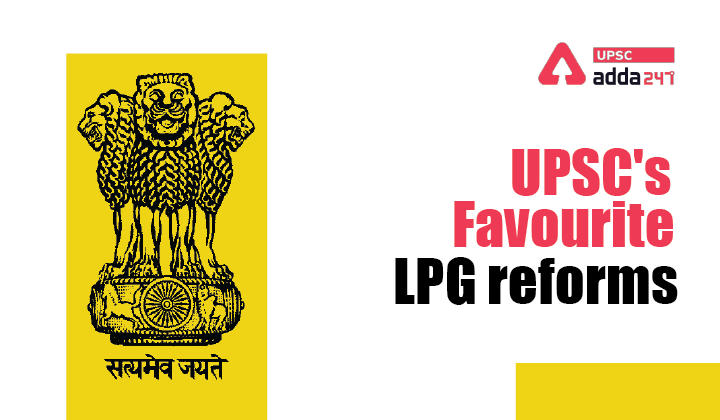Table of Contents
Factors that led to LPG reforms of 1991
- Rise in Prices: The inflation rate increased from around 6% to 16% and the country’s economic position became worse.
- Rise in Fiscal Deficit: Government’s fiscal deficit increased due to an increase in non-development expenditure. Due to the rise in fiscal deficit, there was a rise in public debt and interest to be paid. In 1991, interest liability became 36.4% of total government expenditure.
- Adverse Balance of Payments: In 1980-81, the current account deficit was Rs. 2214 crore and rose to Rs. 17,367 crore in 1990- 91. To cover this deficit, the government took a large amount of foreign loans, which further increased the interest payments.
- Iraq War: In 1990-91, the war in Iraq broke out, which led to a rise in petrol prices. The flow of foreign currency from Gulf countries stopped and this further aggravated the problem.
- Dismal Performance of PSUs: PSUs were not performing well due to a number of reasons, including political interference and unprofessionalism in operations.
- Fall in Foreign Exchange Reserves: India’s foreign exchange reserve fell to its record lowest in 1990-91 and it was insufficient to pay for an import bill even for 2 weeks.
LPG Reforms in India: LPG meaning
- Liberalization– Liberalization is a broad term that refers to the practice of making laws, systems, or opinions less severe, usually in the sense of eliminating certain government regulations or restrictions.
- Privatization– It refers to the transfer of ownership of property or business from a government to a privately owned entity.
- Globalization– It refers to the expansion of economic activities, transcending the political boundaries of nation-states.
Features of LPG Policy 1991
- Abolition of Industrial licensing/ Permit Raj
- The public sector’s role diluted
- Beginning of privatization
- Free entry to foreign investment and technology
- Industrial location policy liberalized
- Abolition of phased manufacturing programs for new projects
- Removal of mandatory convertibility clause
- Reduction in import tariffs
- Deregulation of markets
- Reduction of taxes
LPG Reforms in India: Positive Outcomes
- Increase in India’s GDP growth rate: During 1990-91, India’s GDP growth rate was only 1.1% but after the LPG reforms of 1991, the GDP growth rate increased year by year and in 2015-16 it was estimated to be 7.5% by the IMF.
- Foreign investment destination: Since 1991, India has firmly established itself as a lucrative foreign investment destination and FDI equity inflows in India in 2019-20 (till August) stood at US$ 19.33 billion.
- Decrease in the unemployment rate: In 1991, the unemployment rate was high. However, the LPG reforms of 1991 led to the arrival of new foreign companies, and more jobs got generated thus leading to a decrease in the unemployment rate.
- Per Capita income increased due to an increase in employment.
- Exports have increased and stood at USD 26.38 billion as of October 2019.
LPG Reforms in India: Challenging Outcomes
- Decrease in agriculture GVA: In 1991, agriculture provided employment to 72% of the population and contributed 29.02 percent of the GDP. Now, the share of agriculture in the GDP has gone down drastically to 18%. This has resulted in a decrease in the per capita income of the farmers and an increase in rural indebtedness.
- MNC vs local business: Due to the opening up of the Indian economy to foreign competition, more MNCs started competing with local businesses. This led to highly unequal business competition.
- Globalization has also contributed to the destruction of the environment through pollution by emissions from manufacturing plants and the clearing of vegetation cover.
- Widening income gaps: LPG reforms of 1991 have led to widening income gaps within the country. The higher growth rate was achieved at the cost of the declining incomes of the majority of people, thus leading to an increase in inequality.



 TSPSC Group 1 Question Paper 2024, Downl...
TSPSC Group 1 Question Paper 2024, Downl...
 TSPSC Group 1 Answer key 2024 Out, Downl...
TSPSC Group 1 Answer key 2024 Out, Downl...
 UPSC Prelims 2024 Question Paper, Downlo...
UPSC Prelims 2024 Question Paper, Downlo...




